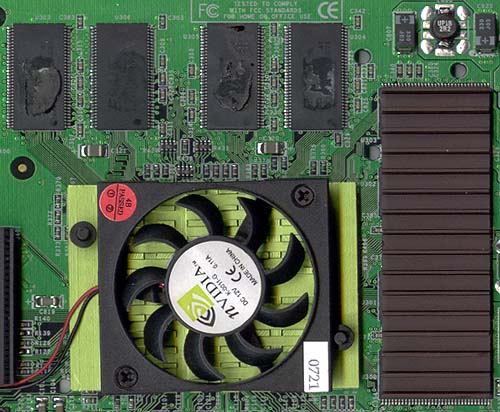The reference board we received looked very similar to the reference GeForce2 GTS design with a few very notable exceptions.
The most noticeable difference is that the GeForce2 Ultra reference design makes use of heatsinks on its memory chips. While we have seen this adopted by a handful of manufacturers in the past on their GeForce2 GTS designs, such as Absolute Multimedia and Hercules (Guillemot), we discovered that the heatsinks used on the Ultra’s memory actually made a difference.

The 460MHz (230MHz DDR) memory on the GeForce2 Ultra board we tested ran hot enough to make the heatsinks placed upon them more than just warm to the touch. While the heatsink placed on the GeForce2 Ultra chip itself wasn’t very hot at all, the memory heatsinks were the exact opposite. During our tests, the memory reached temperatures as high as 109F (42.8C); this was measured by placing a thermistor on the opposite side of the PCB, directly behind a memory chip. We compared this to the operating temperature of memory on a 64MB GeForce2 GTS, which turned out to be 102.8F (39.3C). The small difference in temperature can be accounted for by the heatsinks on the memory actually doing their job. So what happens when we take off the heatsinks?
Without the heatsinks, the back of the memory reached 112.4F (44.7C) which isn’t much warmer than with the heatsinks, so are they necessary? After approximately 20 minutes of running a Quake III Arena loop with only one heatsink off (there are two, one on each set of 4 SDRAM devices), there were quite a bit of artifacts on the screen; eventually the demo loop crashed.
So it seems as if, at least on our board, the heatsinks were necessary for stable operation at such a high frequency.










0 Comments
View All Comments